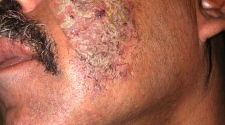Unless we have family members sick, or we become sick, it’s hard to really understand all the ins and outs of a disease. Even for people who are dealing with the illness, it can be overwhelming to learn what goes into finding a treatment that works or even the ever-elusive cure. Today we look at how to understand illness and what it takes to make progress.
The Laboratory
Researchers in the lab spend hours trying to find the treatment that is going to help or the cure. They receive samples from donors and work tirelessly to test them to see what may or may not work. It sounds a little like trial and error, and there is certainly an element to that, but they also track every detail of the research that can lead them to new discoveries. If they do make a discovery, they often request a biological transport to share results with other researchers who may have more insight on the progress. It can take years to find just a treatment and so far, many illnesses don’t have a cure. Fortunately, the treatments are helping us learn how to find the cures and we get closer all the time.
The Doctors
The physicians are the on-ground taskmasters when it comes to learning about an illness. They see and deal with it on a first-hand basis and provide valuable information to researchers to help them in the battle for a cure. It could be as simple as tweaking a healthy diet for gestational diabetes to noticing traits in alopecia patients. When you have staff that is working closely with illness outside the safety net of a lab, there are all sorts of anomalies and kinks that they can discover. A treatment may have done well in studies and tests but when used in a real-world setting, it could be discovered that a patient becomes light sensitive or suddenly cannot eat a type of fruit. Cures are important but should not come at a major life expense to the patient either!
The Funding Societies
The tests, the labs, the research hours, and the patients willing to test the treatments and possible cures all cost a fair amount of money. Many labs run on grant money but that doesn’t cover all the expenses. Throw in a patient who is suffering and needs financial assistance to get appropriate medical help and you have one big financial mess. That is where funding societies come in. American Cancer Society, the American Heart Association, Multiple Sclerosis Association of America, and so much more do whatever they can to raise funds for research and patients. They do these from walks, 5k’s, and any other fundraiser you can think of. They reach out to educate the public about the illnesses, how to find treatment, and how to test treatments. All of them run as non-profits, who are also eligible for grant money and work with volunteers to save money and send what they can where it’s needed.
If you are sick or have a family member who is sick, there are a ton of resources available to help you learn about various treatments. You can find the best doctors and get plenty of support. If you are not sick, we encourage you to learn about just one disease and get passionate about it. Educate yourself and those around you. Find ways to raise money for research or to help a patient receive care. We are a community of people that must take care of each other!
















